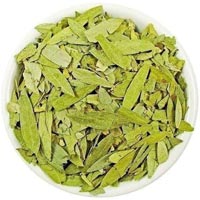Cao H, Zhu C, Liu J.
Alern Ther Health Med.2010 Nov-Dec; 16(6):48-54.
Author information
Beijing University of Chinese Medicine.
Abstract
BACKGROUND:
Wet cupping is a traditional Chinese medicine therapy commonly used in treating herpes zoster in China, and clinical studies have shown that wet cupping may have beneficial effect on herpes zoster compared with Western medication.
METHODS:
We included randomized controlled trials (RCTs) on wet cupping for herpes zoster. We searched Pub Med, the Cochrane Library (Issue 3, 2008), China Network Knowledge Infrastructure (CNKI), Chinese Scientific Journals Full text Database VIP, and Wan Fang Database. All searches ended in February 2009. Two authors extracted data and assessed the trials’ quality independently. Redman 5.0.18 software (The Cochrane Collaboration, The Nordic Cochrane Centre, Copenhagen, Denmark) was used for data analysis with effect estimate presented as relative risk (RR) and mean difference (MD) with a 95% confidence interval (CI).
RESULTS:
Eight RCTs involving 651 patients were included, and the methodological quality of trials was generally fair in terms of randomization, blinding, and intention-to-treat analysis. Meta-analyses showed wet cupping was superior to medication in the number of cured patients (RR 2.49, 95% CI 1.91 to 3.24, P < .00001), the number of patients with improved symptoms (RR 1.15, 95% CI 1.05 to 1.26, P = .003), and reducing the incidence rate of post herpetic neuralgia (RR 0.06, 95% CI 0.02 to 0.25, P = .0001). Wet cupping plus medication was significantly better than medication alone on number of cured patients (RR 1.93, 95% CI 1.23 to 3.04, P = .005) but demonstrated no difference in symptom improvement (RR 1.00, 95% CI 0.92 to 1.08, P = .98). There were no serious adverse effects related to wet cupping therapy in the included trials.
CONCLUSION:
Wet cupping appears to be effective in the treatment of herpes zoster. However, further large, rigorously designed


